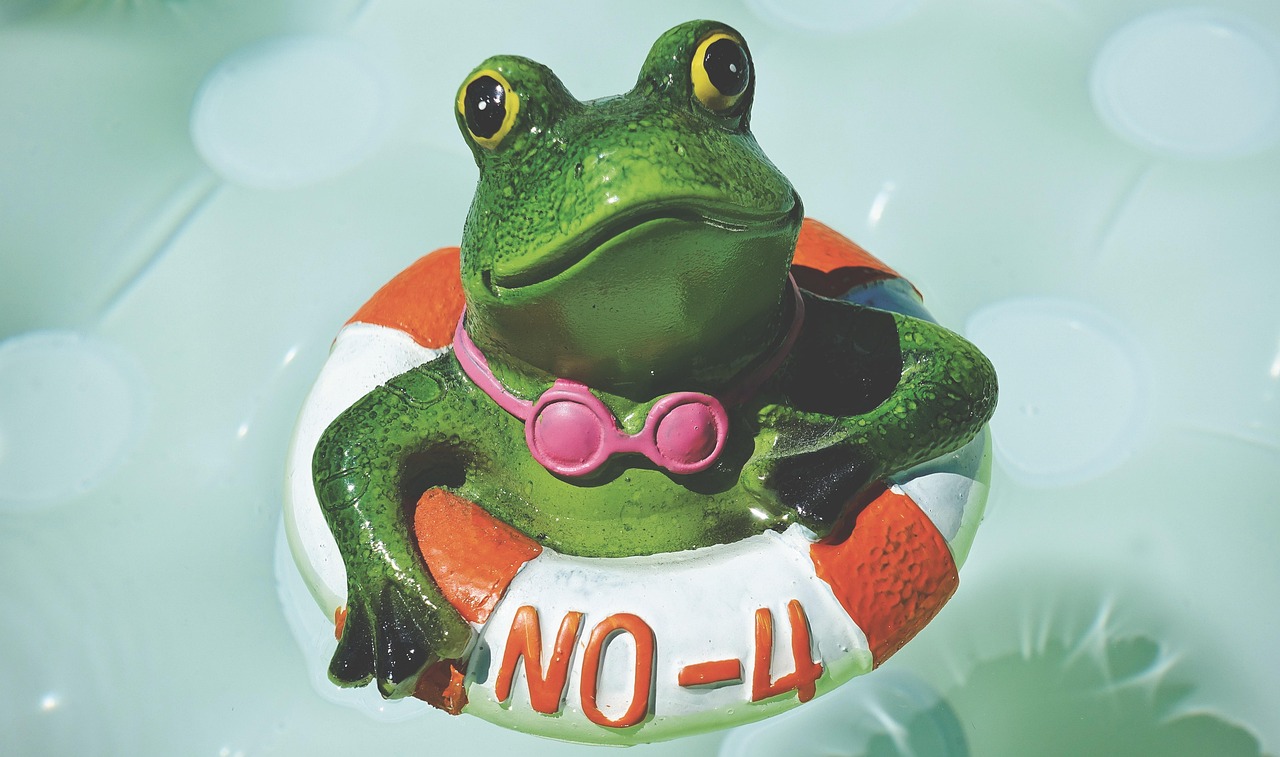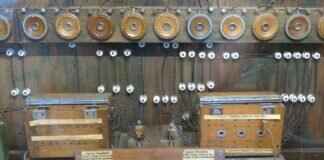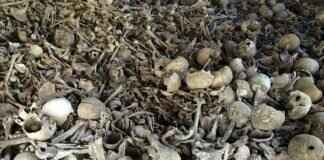This article explores various methods to determine your ring size without the need for traditional measuring tools. Discover simple tricks and tips to ensure a perfect fit for your next ring purchase.
Understanding Ring Sizes
Before attempting to determine your ring size, it’s essential to understand how ring sizes work. Ring sizes are typically measured in numerical values that correspond to the inner circumference of the ring. These sizes can vary by region; for instance, the U.S. uses a different sizing system compared to Europe. Knowing this can help you choose the right size when purchasing rings online or from different countries.
Using a String or Paper Strip
One of the simplest methods to find your ring size involves using a piece of string or a strip of paper. This method is effective and requires minimal tools, making it accessible to everyone. Here’s how to do it:
- Steps to Use a String: Wrap the string around the base of your finger and mark where it overlaps.
- Choosing the Right String: A non-stretchable string, such as cotton or thread, is crucial for accuracy.
- Marking and Measuring: Measure the length of the string against a ruler in millimeters, then refer to a ring size chart to find your corresponding size.
Using a Ring You Already Own
If you have a ring that fits comfortably on the desired finger, you can use it to determine your size. Simply measure the inner diameter of the ring with a ruler. This method is straightforward and eliminates guesswork.
Comparing with a Ring Size Chart
Once you have a measurement, consulting a ring size chart can provide you with an accurate size. Many jewelry websites offer downloadable or printable ring size charts. Ensure you print the chart at 100% scale to maintain accuracy when comparing your measurement. After obtaining your measurement, locate it on the chart to find your ring size.
Using a Coin as a Guide
A coin can serve as an unconventional yet effective tool for estimating your ring size. By comparing the diameter of a coin to the inner diameter of a ring, you can find a close approximation. Select a common coin, such as a quarter or a dime, and place it inside the ring to compare the diameters.
Using the Ice Method
The ice method is an innovative approach to gauge your ring size. By placing your finger in ice water, you can temporarily shrink your finger, allowing for a quick measurement. Fill a bowl with ice and water, immerse your finger for a brief period, and then measure it quickly using a string or paper strip.
Consulting a Jeweler
If you’re unsure about your size after trying these methods, consulting a professional jeweler is a reliable option. They can provide accurate measurements and advice tailored to your needs. A jeweler has specialized tools and expertise to measure your ring size accurately, which is particularly beneficial for those looking to purchase an engagement ring or fine jewelry.
Final Tips for Determining Ring Size
To ensure the best fit, consider factors such as time of day and temperature, which can affect finger size. Your fingers can swell or shrink throughout the day, so it’s advisable to measure at different times to find an average size that works best for you. Additionally, different ring styles may fit differently; wider bands may require a larger size, so take this into account when selecting your ring size based on style preferences.

Understanding Ring Sizes
When it comes to purchasing a ring, knowing your ring size is crucial to ensure a comfortable fit. Ring sizes can be confusing, especially since they vary across different countries and styles. Understanding how these sizes work will help you make informed decisions when selecting a ring.
Ring sizes are primarily measured using numerical values, which correspond to the inner circumference of the ring. This measurement is typically expressed in millimeters. For instance, if a ring has an inner circumference of 50 mm, it is often labeled as a size 5 in the US sizing system. However, other countries may use different sizing scales, such as letters or different numerical systems. Therefore, it’s essential to know which sizing system is being used when you shop for rings.
In addition to numerical values, it’s important to understand that ring sizes can also be categorized into two main types: whole sizes and half sizes. Whole sizes are whole numbers, while half sizes are the increments between these whole numbers. For example, a size 6.5 is half a size larger than a size 6 and can provide a better fit for those whose fingers fall between two whole sizes.
Another factor to consider is the width of the band. Wider bands often require a larger size for comfort, as they can feel tighter on the finger. If you are considering a ring with a wider band, it may be beneficial to size up by a half or whole size to ensure a comfortable fit.
Temperature can also affect your finger size. In warmer weather, your fingers may swell, while cold weather can cause them to shrink. For the most accurate measurement, it’s advisable to measure your ring size at different times of the day and in varying temperatures.
To accurately determine your ring size, you can use various methods, such as measuring your finger with a piece of string or using a ring that fits well. Additionally, consulting a professional jeweler is always a reliable option. They can provide precise measurements and help you navigate through the different sizing systems.
In summary, understanding ring sizes involves knowing the numerical values, the difference between whole and half sizes, the impact of band width, and how temperature can affect finger size. By taking these factors into account, you can confidently choose a ring that fits perfectly.

Using a String or Paper Strip
Determining your ring size can be a straightforward task, especially when utilizing a simple method involving a piece of string or a strip of paper. This technique is not only effective but also requires minimal tools, making it accessible to everyone. Here’s how to do it properly.
Why Use a String or Paper Strip?
Using a string or paper strip is a popular method for measuring ring size because it can be done at home without the need for specialized tools. This method is particularly useful for those who may not have access to a jeweler or a ring sizer. Additionally, it allows for a personalized measurement that can be tailored to the specific finger you intend to wear the ring on.
Steps to Measure Your Ring Size
- Gather Your Materials: You will need a piece of non-stretchable string or a strip of paper, a pen or marker, and a ruler.
- Wrap the String or Paper: Take the string or paper strip and wrap it around the base of the finger where you plan to wear the ring. Ensure it is snug but not too tight, as this will affect the accuracy of your measurement.
- Mark the Overlap: Using your pen or marker, make a mark where the string or paper overlaps. This is your measurement point.
- Measure the Length: Remove the string or paper from your finger and lay it flat. Use the ruler to measure the length from the end of the string or paper to the mark you made. This measurement should be taken in millimeters for accuracy.
Choosing the Right Material
When selecting a string or paper strip, it’s crucial to use a non-stretchable material. Cotton string or a thin strip of paper works best, as they provide a clear and accurate measurement without the risk of stretching. Avoid using elastic materials, as they can give a misleading measurement.
Marking and Measuring Accurately
It’s important to mark the string or paper strip carefully at the point of overlap. A precise measurement ensures that you can accurately determine your ring size. After measuring, refer to a ring size chart to find the corresponding size based on the length you’ve measured.
Tips for Accuracy
- Measure at the Right Time: Your fingers can swell or shrink due to temperature and time of day. It’s best to measure at a time when your fingers are at a normal size, typically in the evening.
- Consider the Width of the Ring: If you plan to wear a wider band, you may need to go up a size. Keep this in mind when using the string method to ensure a comfortable fit.
By following these steps, you can easily determine your ring size using a string or paper strip. This method is not only practical but also empowers you to take control of your ring purchasing experience.
Steps to Use a String
Measuring your ring size using a string is a simple yet effective method that requires minimal tools. This technique is particularly useful if you don’t have access to a ring sizer or if you prefer to measure at home. Follow these detailed steps to ensure you get an accurate measurement for your ring size.
- Gather Your Materials: You will need a piece of non-stretchable string, a ruler, and a pen or marker for marking.
- Prepare Your Finger: It’s best to measure your finger at the end of the day when it is likely to be at its largest. Avoid measuring when your fingers are cold, as this can lead to an inaccurate size.
- Wrap the String: Take the string and wrap it around the base of the finger you intend to wear the ring on. Ensure that the string is snug but not too tight; it should feel comfortable and allow for slight movement.
- Mark the Overlap: Once the string is wrapped around your finger, mark the point where the string overlaps. This mark will indicate the circumference of your finger.
- Measure the Length: Carefully lay the string flat and use a ruler to measure the length from the end of the string to the mark you made. Make sure to measure in millimeters for the most accurate results.
- Consult a Ring Size Chart: After obtaining the measurement, refer to a ring size chart. These charts correlate the circumference measurements to standard ring sizes, allowing you to find your size easily.
For added accuracy, consider repeating the measurement a couple of times to ensure consistency. If you find discrepancies, take the average of your measurements. Additionally, if you’re planning to purchase a wide band ring, you may need to size up, as wider rings typically fit more snugly.
By following these steps, you can confidently determine your ring size using a string, ensuring that your next ring purchase fits perfectly.
Choosing the Right String
When it comes to determining your ring size accurately, the choice of string is pivotal. Using a non-stretchable string ensures that the measurement you take reflects the true circumference of your finger, which is essential for achieving a comfortable fit. Here are some key points to consider when selecting the right string for this important task.
- Material Matters: Opt for materials such as cotton or thread. These options are ideal because they do not stretch easily, providing a reliable measurement. Avoid elastic bands or stretchy materials, as they can lead to inaccuracies in your sizing.
- Thickness of the String: A string that is too thick may not wrap around your finger accurately, while one that is too thin could slip or slide. A medium thickness is recommended, as it strikes a balance between ease of use and measurement accuracy.
- Length of the String: Make sure you have enough length to wrap around your finger comfortably. A piece that is at least 10 inches long will allow for overlapping and marking without running short.
- Color and Visibility: Choose a string that is easily visible, especially against your skin tone. This will help you mark the point of overlap more clearly, ensuring a precise measurement.
- Using a Paper Strip: If you don’t have string handy, a strip of paper can also be used. Cut a strip that is about 1 cm wide and long enough to wrap around your finger. Just like with string, ensure it is non-stretchable.
Steps to Ensure Accurate Measurement
Once you have chosen the right string, follow these steps to measure your ring size accurately:
- Wrap the String: Take the selected string or paper strip and wrap it around the base of the finger where the ring will sit. Ensure it is snug but not too tight, allowing for some comfort.
- Mark the Overlap: Use a pen or pencil to mark the point where the string overlaps. This is your reference point for measurement.
- Measure the Length: Lay the string flat against a ruler to measure its length in millimeters. This measurement will help you find your corresponding ring size.
- Consult a Ring Size Chart: Use the length you measured to refer to a ring size chart. This will provide you with your accurate ring size based on the circumference of your finger.
Why Choosing the Right String is Important
The accuracy of your ring size measurement can significantly impact your overall satisfaction with the ring. A well-fitting ring ensures comfort, prevents loss, and enhances the overall aesthetic appeal. If the string stretches during the measuring process, you may end up with a ring that is either too tight or too loose, leading to discomfort or the risk of losing the ring altogether.
Moreover, using the right materials not only ensures accuracy but also simplifies the measuring process. By following the steps outlined above and selecting a suitable string, you can confidently determine your ring size without the need for professional tools or assistance.
In summary, the right choice of string is fundamental when measuring your ring size. By prioritizing non-stretchable materials and following a structured approach, you can achieve an accurate measurement that leads to the perfect ring fit.
Marking and Measuring
When it comes to determining your ring size, precise measurement is crucial for ensuring a comfortable fit. One effective method is using a piece of string or a strip of paper. This approach is not only simple but also requires minimal tools, making it accessible for anyone looking to find their perfect ring size.
- Gather Your Materials: You will need a piece of non-stretchable string or a strip of paper, a ruler, and a pen or pencil for marking.
- Wrap the String: Take the string or paper strip and wrap it around the base of your finger. Ensure that it fits snugly but is not too tight, as this can lead to an inaccurate measurement.
- Mark the Overlap: Carefully mark the point where the string overlaps. This is a crucial step, as an incorrect mark can result in a size that is either too small or too large.
- Measure the Length: Once marked, lay the string flat against a ruler to measure the length in millimeters. This measurement will be essential for determining your ring size.
- Consult a Ring Size Chart: After obtaining your measurement, refer to a reliable ring size chart. These charts typically convert the length of your string into a corresponding ring size, making it easy to find your match.
Important Considerations:When marking and measuring, it is essential to consider a few factors that can affect the accuracy of your measurement:
- Time of Day: Your fingers can swell or shrink throughout the day, so it is advisable to measure at different times to find an average size.
- Temperature: Warm weather can cause your fingers to expand, while cold temperatures may lead to contraction. Measure in a comfortable environment for the best results.
- Choosing the Right String: Opt for a material that does not stretch, such as cotton or thread. Avoid elastic materials, as they can lead to misleading measurements.
In conclusion, marking and measuring your finger with a string or paper strip is a practical and effective method for determining your ring size. By following these steps and considering the important factors mentioned, you can confidently find the right size for your next ring purchase. This DIY approach empowers you to take control of your jewelry sizing needs without the need for professional tools or visits to a jeweler. Whether you are buying a gift or treating yourself, accurate measurement ensures a perfect fit that you will cherish for years to come.
Using a Ring You Already Own
If you have a ring that fits comfortably on the desired finger, you can use it to determine your size. This method is straightforward and eliminates the need for guesswork. By leveraging a ring you already own, you can ensure a more accurate measurement without additional tools or complex techniques.
When using a ring as a sizing tool, it’s important to consider a few key factors that can affect the accuracy of your measurement. Here’s a detailed guide on how to effectively use a ring you already own to find your perfect size.
Before you begin, make sure the ring you choose is one that fits well on the finger you intend to wear your new ring. It should slide on easily and sit comfortably without being too loose or too tight. If you have multiple rings, you may want to try a few to see which one provides the best fit.
To accurately determine your ring size using an existing ring, follow these simple steps:
- Step 1: Find a ruler or a measuring tape that has millimeter markings for precision.
- Step 2: Measure the inner diameter of the ring. Place the ring on a flat surface and use the ruler to measure straight across the center of the ring’s inner circle.
- Step 3: Record the measurement in millimeters, as this will help you find your corresponding ring size.
Once you have the inner diameter measurement, you can compare it to a ring size chart. These charts are readily available online and provide a direct correlation between the inner diameter measurement and the ring size. For example, if your ring’s diameter measures 16.5 mm, you would typically wear a size 6.5 ring.
It’s also crucial to consider that different ring styles can fit differently. Wider bands may require a larger size due to their snugger fit. If you’re planning to purchase a wider ring, you might want to choose a half size larger than what you measured with your existing ring.
If you’re uncertain about your measurements or if your ring is an unusual shape, it’s always a good idea to consult with a professional jeweler. They can provide expert advice and ensure that you’re selecting the correct size for your new ring.
In summary, using a ring you already own is an effective method for determining your ring size. By following the steps outlined above, you can confidently find your size without the need for specialized tools. This method not only saves time but also helps you avoid the frustration of ordering the wrong size, ensuring that your new ring fits perfectly.

Comparing with a Ring Size Chart
Once you have obtained a measurement of your finger, the next step is to consult a ring size chart. These charts are invaluable tools that can help you find the exact size you need for your new ring. They typically feature a list of ring sizes along with their corresponding circumferences, which makes it easy to identify your perfect match.
Understanding Ring Size Charts
Ring size charts are designed to simplify the process of finding the right fit. The sizes are usually indicated in numerical values, which correspond to the inner circumference of the ring in millimeters or inches. For example, a size 6 ring has an inner circumference of approximately 51.84 mm. When using a ring size chart, it’s crucial to ensure that you are looking at a reliable source, as sizes can vary slightly among different manufacturers.
Finding an Online Ring Size Chart
- Many jewelry websites offer downloadable or printable ring size charts. These charts can be easily accessed and saved for future reference.
- When printing a chart, ensure that it is set to 100% scale. This is essential for accuracy, as resizing the chart can lead to incorrect measurements.
- Look for charts that include both US and international sizes, especially if you are purchasing from overseas.
Measuring Your Finger Against the Chart
After obtaining your measurement, locate it on the chart to determine your ring size. It’s best to measure your finger at different times of the day, as finger sizes can fluctuate due to temperature and activity levels. For the most accurate results, consider measuring your finger in the evening when it is at its largest.
Using the Circumference Measurement
To use the circumference measurement effectively, it’s advisable to compare it directly with the chart. Most charts will indicate the corresponding ring sizes next to the circumferences. If your measurement falls between two sizes, it’s generally recommended to opt for the larger size, especially if you plan to wear the ring for extended periods.
Common Mistakes to Avoid
- Not Measuring Correctly: Ensure you are measuring the widest part of your finger.
- Ignoring Temperature: Cold weather can cause your fingers to shrink, while heat can cause them to swell.
- Using an Inaccurate Chart: Always verify that the chart you are using is accurate and from a reputable source.
Consulting a Jeweler for Accuracy
If you are still uncertain about your size after consulting a ring size chart, consider visiting a professional jeweler. They can provide precise measurements using specialized tools and offer advice tailored to your preferences. This is particularly beneficial for significant purchases, such as engagement rings, where the right fit is critical.
In summary, comparing your measurement with a ring size chart is a straightforward and effective method to ensure you select the correct ring size. By following these guidelines, you can confidently make a purchase that will fit comfortably and beautifully.
Finding an Online Ring Size Chart
When shopping for rings, knowing your correct size is crucial to ensure a perfect fit. One of the most effective ways to achieve this is by utilizing an online ring size chart. These charts are not only convenient but also provide a reliable method to determine your ring size without the need for professional tools.
Why Use an Online Ring Size Chart?
Online ring size charts are widely available and can be easily accessed from the comfort of your home. They offer a visual representation of ring sizes alongside their corresponding measurements, making it easier for you to find your perfect fit. Additionally, these charts often include both standard and international sizing systems, catering to a global audience.
Steps to Access and Use an Online Ring Size Chart
- Search for Reputable Jewelry Websites: Start by looking for well-known jewelry retailers or dedicated websites that provide ring size charts. Websites like James Allen or Blue Nile are excellent examples.
- Download or Print the Chart: Most websites allow you to download or print their ring size charts. Ensure that you print the chart at 100% scale to maintain accuracy. This means avoiding any options that suggest “fit to page,” which can distort the measurements.
- Measure Your Finger: Use a piece of string or a flexible measuring tape to measure the circumference of your finger. Make sure to note the measurement in millimeters for better accuracy.
- Compare Measurements: Once you have your finger’s measurement, compare it with the sizes listed on the chart. The chart will typically provide a range of sizes corresponding to various circumferences, making it easy to find your size.
Common Mistakes to Avoid
- Printing Scale: One of the most common mistakes is printing the chart at the wrong scale. Always double-check that the chart is printed at 100% scale to ensure accurate measurements.
- Measuring at the Wrong Time: Finger sizes can fluctuate due to temperature and time of day. It’s best to measure your finger at different times to ensure you get an average size.
- Ignoring Ring Style: Different styles of rings can fit differently. For example, wider bands may require a slightly larger size than a traditional band. Consider the style of the ring when determining your size.
Where to Find Quality Ring Size Charts
Many reputable jewelry websites offer downloadable or printable ring size charts. It’s advisable to look for charts that are user-friendly and provide clear instructions. Additionally, some websites may offer video tutorials on how to measure your ring size accurately, which can be an added benefit for first-time buyers.
Final Thoughts
Finding an online ring size chart is a straightforward process that can significantly enhance your shopping experience. By following the steps outlined above and avoiding common pitfalls, you can ensure that you select the right ring size. This not only saves you time and hassle but also enhances your satisfaction with your purchase.
Measuring Circumference with a Chart
When it comes to finding your perfect ring size, is a reliable and straightforward method. This approach is essential for ensuring that your ring fits comfortably and securely. By understanding how to accurately measure your finger’s circumference and then using a corresponding ring size chart, you can easily determine your ideal size.
To begin, you need to obtain a precise measurement of your finger’s circumference. This can be done using a piece of string or a flexible measuring tape. Wrap the string around the base of your finger, ensuring it is snug but not too tight. Mark the point where the string overlaps, then measure the length against a ruler. If using a tape measure, simply wrap it around your finger and note the measurement. It’s best to measure at different times of the day, as finger size can fluctuate due to temperature and other factors.
Once you have your measurement in millimeters, it’s time to consult a ring size chart. These charts are widely available online and often provided by jewelry retailers. They typically list the circumference measurements alongside their corresponding ring sizes. For instance, if your measurement is 54 mm, you can easily find that it corresponds to a size 7 in most standard sizing systems.
| Ring Size | Circumference (mm) |
|---|---|
| 5 | 49.3 |
| 6 | 51.8 |
| 7 | 54.4 |
| 8 | 57.0 |
| 9 | 59.5 |
It’s crucial to ensure that you print the chart at 100% scale if you’re using a downloadable version. This ensures that the measurements are accurate and that you get a true representation of your size. Many people make the mistake of resizing the chart, which can lead to incorrect sizing.
In addition to measuring your finger circumference, consider the width of the ring you plan to purchase. Wider bands typically require a slightly larger size than standard ones. Therefore, if you are choosing a ring with a wider band, you might want to go up half a size to ensure comfort.
Lastly, if you’re still uncertain about your size after measuring and consulting the chart, don’t hesitate to reach out to a professional jeweler. They can provide expert advice and help you find the perfect fit. Remember, a well-fitted ring should slide over your knuckle with some resistance but should not feel tight or uncomfortable once on.
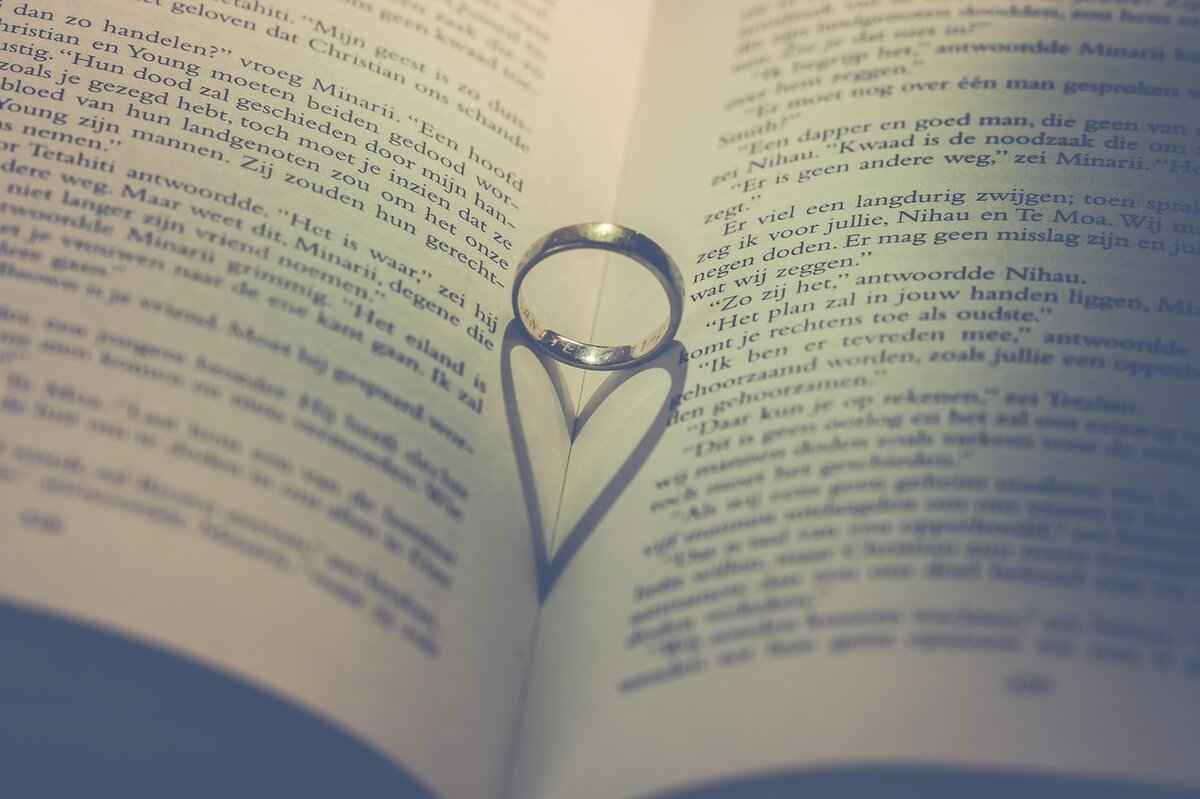
Using a Coin as a Guide
When it comes to determining your ring size, using a coin can be a surprisingly effective method. This unconventional approach allows you to estimate your size without the need for specialized tools. By comparing the diameter of a coin to the inner diameter of a ring, you can gain a close approximation of your size. Below, we explore how to effectively use this method, ensuring you have the necessary information to find the perfect fit.
Selecting the appropriate coin is the first step in this process. Common coins, such as a quarter or a dime, are ideal due to their consistent sizes. For instance, a U.S. quarter has a diameter of approximately 24.26 mm, while a dime measures around 17.91 mm. Using these coins as references can help you gauge the size of your ring accurately.
To utilize this method, start by placing the coin inside your ring. Make sure the coin is flat against the inner surface of the ring. Observe the fit: if the coin fits snugly, your ring size is likely close to that of the coin’s diameter. If the ring is larger than the coin, it indicates that you may need a larger size. Conversely, if the coin is smaller than the inner diameter of the ring, it suggests that your size is smaller than the coin’s measurement.
Ring sizes are typically measured in millimeters, corresponding to the inner circumference of the ring. By knowing the diameter of the coin and comparing it to your ring, you can refer to a ring size chart to find your exact size. For example, if your ring’s inner diameter is similar to that of a quarter, you would look for sizes around US size 8.
- Accessibility: Coins are readily available and do not require any special tools.
- Quick Estimation: This method provides a fast way to estimate your ring size without complicated measurements.
- Convenience: You can perform this method anywhere, making it easy to check your size on the go.
While using a coin can be effective, it’s essential to recognize its limitations. This method may not account for variations in finger size due to factors such as temperature or time of day. Additionally, different ring styles may fit differently, especially with wider bands requiring a larger size. Thus, it’s advisable to use this method as a preliminary guide rather than a definitive measurement.
For the best results, consider measuring your ring size at different times of the day. Your fingers naturally swell and shrink, which can affect the fit. Additionally, ensure that you are using a clean, undamaged coin to avoid discrepancies in measurement. If you find that your size is between two sizes, it is generally recommended to opt for the larger size, especially if you are purchasing a ring with a wider band.
In conclusion, using a coin as a guide can be a simple yet effective way to estimate your ring size. By following the steps outlined above and being mindful of the limitations, you can make a more informed decision when it comes to your next ring purchase.
Choosing the Right Coin
is an essential step when estimating your ring size using the coin method. This method serves as a practical and accessible way to gauge your ring size without needing specialized tools. By selecting a commonly used coin, you can easily compare its diameter to the inner diameter of your ring.
When it comes to choosing the right coin, consider the following factors:
- Commonly Used Coins: Coins like the quarter, dime, or nickel are ideal for this purpose. They have a standard size that is widely recognized, making them reliable reference points.
- Diameter Comparison: Each coin has a specific diameter that you can use to compare against your ring. For example, a quarter has a diameter of approximately 24.26 mm, while a dime measures about 17.91 mm. Knowing these dimensions helps you estimate your size accurately.
- Thickness Matters: Ensure that the thickness of the coin doesn’t interfere with the measurement. A thicker coin might not fit comfortably inside the ring, leading to inaccurate comparisons.
To use this method effectively, follow these steps:
- Select Your Coin: Choose either a quarter, dime, or nickel based on the size you believe may be close to your ring size.
- Place the Coin Inside the Ring: Gently insert the coin into the ring to see how well it fits. This will help you determine if your ring size is larger or smaller than the coin.
- Assess the Fit: If the coin fits snugly inside the ring, your size may be close to the coin’s diameter. If it’s too loose, you might need a larger size, and if it’s too tight, a smaller size may be necessary.
Additionally, it’s important to keep in mind that different styles of rings may fit differently. For instance, wider bands often require a larger size than thinner ones. Therefore, while using a coin can provide a good estimate, always consider the style of the ring you plan to purchase.
In summary, choosing the right coin can simplify the process of determining your ring size. By using a common coin and following the outlined steps, you can achieve a reliable estimation, ensuring a better fit for your next ring purchase.
Comparing Coin Diameter
When it comes to determining your ring size, utilizing everyday objects can be a game changer. One such object is a coin, which can help you gauge your size with surprising accuracy. This method is simple, accessible, and requires no special tools, making it a great option for anyone looking to find their perfect fit.
To effectively use a coin for measuring your ring size, follow a few straightforward steps. First, select a coin that is commonly used, such as a quarter, dime, or nickel. Each of these coins has a well-known diameter, which can serve as a reliable reference point.
- Step 1: Choose the Right Coin – A quarter, for example, has a diameter of approximately 24.26 mm, while a dime measures about 17.91 mm. Knowing these dimensions can help you decide which coin to use based on your estimated ring size.
- Step 2: Position the Coin – Place the chosen coin inside the ring you wish to measure. Ensure that the coin sits flat against the inner surface of the ring for an accurate comparison.
- Step 3: Assess the Fit – Observe how the coin fits within the ring. If the coin fits snugly and there is little to no space around its edges, your ring size is likely close to the diameter of that coin.
- Step 4: Determine Size Differences – If the coin is too large for the ring, it indicates that your ring size is smaller than the coin’s diameter. Conversely, if the coin is too small, your ring size is larger than the coin’s size.
It’s important to understand that while using a coin is a helpful method, it is not foolproof. Different ring styles can fit differently, and the width of the band can also affect how a ring feels on your finger. Therefore, always consider your comfort and preferences when determining your size.
- Consider Multiple Coins: If you’re unsure, try using several coins of varying sizes. This can give you a broader perspective on where your ring size may fall.
- Combine Methods: For the best results, combine this method with others, such as measuring with a string or using a ring size chart. This will provide a more comprehensive understanding of your size.
- Take Your Time: Don’t rush through the process. Take your time to ensure that you are making accurate comparisons and measurements.
Using a coin to determine your ring size is not only practical but also an engaging way to involve everyday items in your jewelry shopping experience. By following these steps and tips, you can confidently choose a ring that fits perfectly, ensuring comfort and style in your next purchase.
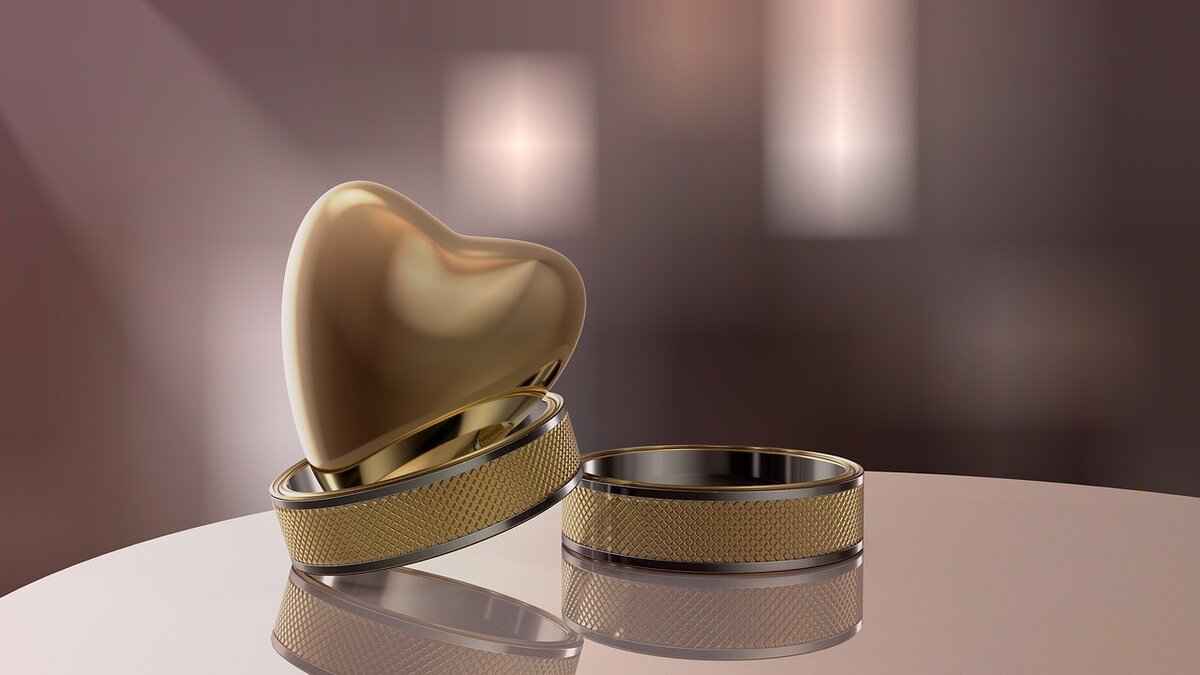
Using the Ice Method
The ice method is an innovative and practical approach to determine your ring size without the need for traditional measuring tools. This technique is particularly useful for those who may not have access to a ruler or measuring tape, or for those who simply want a quick way to find their size. By immersing your finger in ice water, you can temporarily reduce its size, allowing for an accurate measurement. Below, we delve into the steps and considerations for effectively using this method.
How Does the Ice Method Work?
The principle behind the ice method is straightforward: cold temperatures cause your fingers to contract slightly, which can provide a more accurate measurement for ring sizing. This is especially beneficial for individuals whose fingers may swell due to heat or other factors. By using this method, you can achieve a more precise size that reflects your finger’s dimensions during cooler conditions.
Steps to Utilize the Ice Method
- Gather Your Materials: You will need a bowl filled with ice and water, a measuring tool such as a string or a strip of paper, and optionally, a ruler for precise measurement.
- Prepare Your Finger: Before immersing your finger, ensure that it is clean and dry. This helps in getting a more accurate measurement.
- Immerse Your Finger: Submerge your finger in the ice water for a brief period, typically around 1 to 2 minutes. Be cautious not to leave it in too long to avoid discomfort.
- Measure Quickly: After removing your finger from the ice water, quickly wrap the string or paper strip around the base of your finger and mark where it overlaps. Measure this length immediately, as your finger will begin to warm up and return to its normal size.
Considerations and Precautions
While the ice method can be effective, there are some important considerations to keep in mind:
- Comfort Level: Make sure you are comfortable with cold temperatures. If you have any medical conditions that could be aggravated by cold exposure, consult with a healthcare professional first.
- Timing: The ice method should be used in a controlled environment. Avoid measuring your ring size after physical exertion, as this can lead to swelling.
- Repeat Measurements: To ensure accuracy, consider repeating the process a couple of times and averaging the results. This accounts for any variations that might occur due to temperature changes or measurement errors.
Why Choose the Ice Method?
The ice method is not only innovative but also convenient. It allows you to measure your ring size at home without needing to visit a jeweler, making it an excellent option for last-minute purchases or surprises. Additionally, this method is particularly useful for individuals who may experience fluctuations in finger size due to temperature or time of day. By using the ice method, you can achieve a more reliable measurement that reflects your finger’s size during cooler conditions.
In summary, the ice method is a unique and effective technique for determining your ring size. By following the outlined steps and keeping in mind the necessary precautions, you can ensure that your next ring purchase fits perfectly. Remember, accuracy is key, so take your time and measure carefully!
Preparing for the Ice Method
When it comes to determining your ring size, the ice method is an innovative and effective approach. This technique leverages the temporary shrinkage of your fingers due to cold exposure, allowing for a more accurate measurement. However, it is crucial to prepare correctly to ensure both safety and effectiveness.
To begin, you will need a few simple items:
- A bowl – Choose one that is large enough to comfortably fit your hand.
- Ice cubes – Regular ice cubes from your freezer will work perfectly.
- Water – Cold water is essential to enhance the cooling effect.
- A timer – This can be a stopwatch or your phone’s timer to track immersion time.
- A measuring tool – Have a string or paper strip ready for measuring your finger after immersion.
Start by filling the bowl with ice cubes, then pour in cold water until the ice is fully submerged. The ideal ratio is about 50% ice and 50% water, which will create a chilling environment for your finger. Make sure the water is deep enough to cover your finger completely when you immerse it.
Once your ice bath is ready, it’s time to immerse your finger. Carefully dip your finger into the icy water, ensuring that it is fully submerged. You should only keep your finger in the ice bath for a short duration, typically around 10 to 15 seconds. This brief exposure is sufficient to cool your finger without causing discomfort or potential injury.
While the ice method is effective, it is vital to monitor how your body reacts. If you start to feel any pain or extreme discomfort, remove your finger immediately. The goal is to achieve a temporary shrinkage of your finger, not to endure discomfort. Always prioritize your safety and well-being during this process.
After the immersion, quickly remove your finger from the ice bath and dry it off. You will want to measure your finger’s circumference before it returns to its normal size. Use the string or paper strip to wrap around the base of your finger, marking where it overlaps. This will give you a precise measurement to compare against a ring size chart.
While the ice method can be a quick solution, it is important to understand its limitations. The effects of cold exposure are temporary, and your finger will gradually return to its normal size. Therefore, it is best to measure immediately after removing your finger from the ice bath. Additionally, consider factors such as the time of day and temperature, as these can affect your finger size.
In conclusion, the ice method is a unique and practical way to gauge your ring size. By preparing correctly and following safety precautions, you can achieve an accurate measurement that will help you find the perfect ring fit.
Measuring After Icing
When it comes to determining your ring size, accuracy is paramount. One innovative method that many people overlook is the ice method. This technique allows you to temporarily reduce the size of your finger, making it easier to get a precise measurement. Here’s how to effectively use this method to find your ring size.
The ice method is particularly useful because it takes advantage of the natural contraction of your fingers in cold temperatures. Cold temperatures can cause your fingers to shrink slightly, which can be beneficial for obtaining a quick measurement. This method is especially helpful during warmer months when fingers tend to swell due to heat.
To start, you will need a bowl filled with ice and water. The temperature of the water is crucial; it should be cold enough to create a noticeable effect on your fingers. Here’s a step-by-step guide:
- Fill a bowl with ice and water.
- Immerse your finger in the icy water for about 1-2 minutes.
- Remove your finger and dry it quickly.
Once your finger has been in the ice water, it will feel cold and may appear slightly smaller than its normal size. This is the perfect time to measure:
- Take a piece of string or a paper strip and wrap it around the base of your finger.
- Mark the point where the string overlaps.
- Use a ruler to measure the length marked in millimeters.
It’s important to act quickly after removing your finger from the ice. The longer you wait, the more your finger will return to its normal size, which can affect the accuracy of your measurement. Be prepared with your measuring tool before you immerse your finger in the ice.
After measuring, you can refer to a ring size chart to find your corresponding size. Keep in mind that this method provides a temporary measurement, so it’s best to confirm your size using other methods or consult with a jeweler for a more permanent solution.
While the ice method is effective, it’s essential to use caution. Prolonged exposure to cold water can lead to discomfort or numbness. Always monitor how long your finger is submerged, and if you feel any pain, remove it immediately. This method should be used as a quick temporary solution rather than a definitive measurement.
In summary, the ice method offers a unique approach to measuring your ring size by temporarily reducing the size of your finger. By preparing adequately and acting quickly, you can achieve a more accurate measurement, helping you find the perfect fit for your next ring purchase.
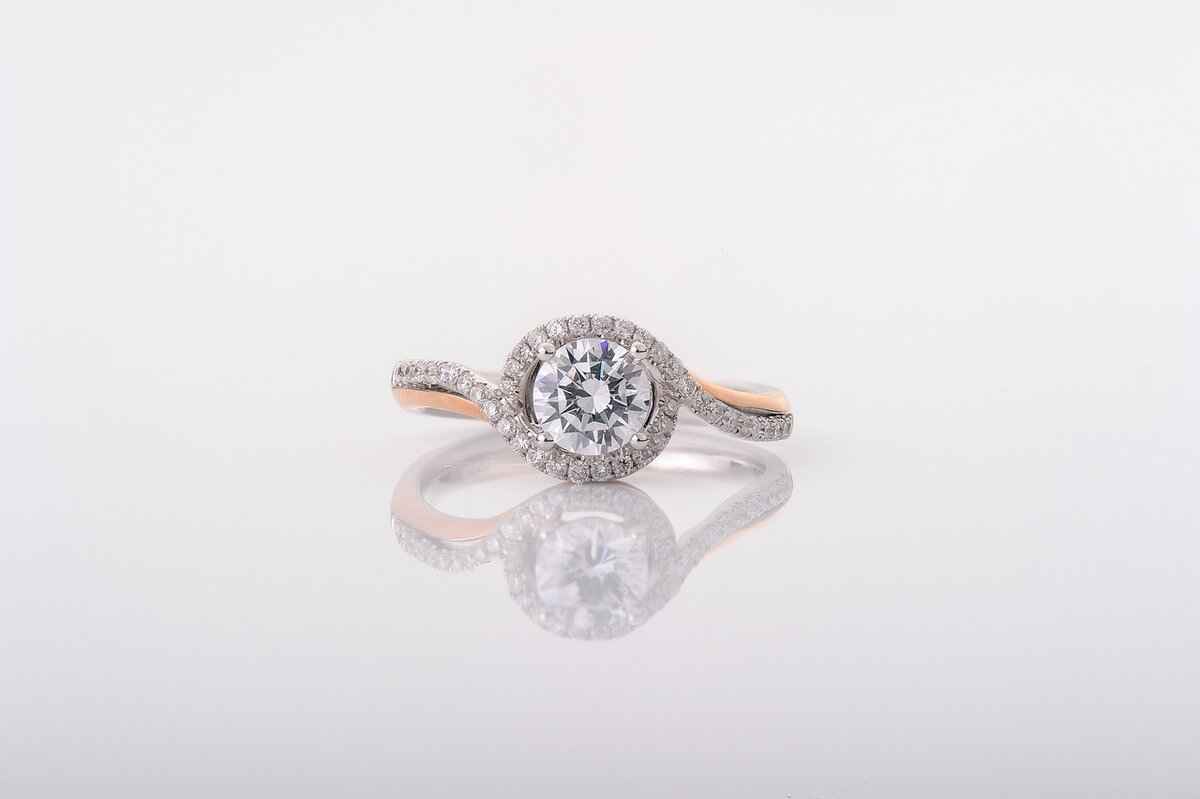
Consulting a Jeweler
When it comes to determining your ring size, taking the time to consult a professional jeweler can be an invaluable step. While various DIY methods exist, nothing beats the precision and expertise that a jeweler can provide. This article delves into the benefits of seeking professional help when measuring your ring size, ensuring you make an informed decision for your next jewelry purchase.
Why You Should Consult a Jeweler for Accurate Measurements
If you find yourself uncertain about your ring size after trying various methods, consulting a jeweler is a reliable option. Professional jewelers possess specialized tools designed to measure your finger accurately. They can provide measurements that account for factors like finger shape and swelling, which can fluctuate throughout the day. This level of accuracy is particularly important when purchasing significant pieces, such as engagement rings or wedding bands.
- Expertise and Experience: Jewelers have years of training and hands-on experience in measuring ring sizes. They understand the nuances of different finger shapes and sizes.
- Specialized Tools: Unlike home methods, jewelers use precise measuring instruments, such as mandrels and sizers, which can give you an exact size.
- Tailored Advice: A jeweler can provide personalized advice based on your preferences and lifestyle, helping you choose a style that fits comfortably.
Exploring Custom Options with a Jeweler
If you’re considering a custom ring, consulting a jeweler is essential. They can guide you through the design process, ensuring that your ring not only fits perfectly but also matches your vision. Jewelers can help you select the right materials, stones, and settings, making your custom piece truly unique.
The Importance of Resizing Options
In some cases, you may need to resize a ring after purchasing it. A professional jeweler can assist with this process, ensuring that your ring maintains its integrity and design. They can also provide insights into how resizing may affect the ring’s aesthetics, particularly with intricate designs.
Additional Services Offered by Jewelers
Beyond just measuring ring sizes, jewelers offer a range of services that can enhance your jewelry experience. These include:
- Cleaning and Maintenance: Regular cleaning can keep your rings looking new, and jewelers can offer professional cleaning services.
- Repair Services: If your ring is damaged or needs adjustment, jewelers can perform repairs that restore its beauty and functionality.
- Insurance Appraisals: Jewelers can provide appraisals for insurance purposes, ensuring that your investment is protected.
Final Thoughts on Consulting a Jeweler
In summary, consulting a professional jeweler is a smart step when determining your ring size. Their expertise, specialized tools, and tailored advice can ensure that you find the perfect fit. Whether you’re purchasing a ready-made ring or designing a custom piece, a jeweler can help you navigate the process with confidence. Remember, investing in accurate measurements now can save you time and hassle in the future.
Benefits of Professional Measurement
When it comes to purchasing a ring, whether it be for an engagement, anniversary, or just a special gift, knowing your exact ring size is crucial. While there are several DIY methods to estimate your ring size, consulting a professional jeweler offers numerous advantages that can save you time, money, and potential disappointment.
One of the primary benefits of professional measurement is the expertise that jewelers bring to the table. They are trained to accurately assess your ring size using specialized tools and techniques. This precision is particularly important when purchasing fine jewelry, as even a small discrepancy in size can lead to discomfort or a ring that doesn’t fit properly.
Jewelry stores are equipped with a variety of tools designed specifically for measuring ring sizes. These tools can provide a more accurate measurement than common household items. For instance, jewelers often use ring sizers that can be adjusted to fit your finger perfectly, allowing for an exact size determination.
Many people are unaware that finger size can fluctuate due to various factors, including temperature, time of day, and even diet. A professional jeweler understands these nuances and can help you find your size under optimal conditions. They will often recommend measuring your finger at different times to ensure the best fit, especially if you are purchasing a ring for a special occasion.
Different ring styles can fit differently, and a jeweler can provide valuable insights on how various designs may affect sizing. For example, wider bands typically require a slightly larger size compared to thinner bands. A professional can guide you in choosing a style that not only matches your aesthetic preferences but also fits comfortably.
If you’re considering a custom ring, consulting a jeweler is essential. They can help you design a piece that fits perfectly and meets your specific preferences. Custom rings often require precise measurements to ensure the final product looks and feels just right.
Even if you already own a ring that you love, you might find that it doesn’t fit perfectly. A jeweler can offer resizing services, allowing you to adjust the ring to your ideal size. This service can be particularly useful if your finger size changes over time, ensuring that your cherished pieces remain wearable.
Perhaps one of the most significant benefits of consulting a professional jeweler is the peace of mind that comes with knowing you have an accurate measurement. This is especially important when purchasing an engagement ring, where the stakes are high and the emotional investment is significant. You want to ensure that the ring you choose is perfect in every way, and a jeweler can help you achieve that.
In summary, while DIY methods for measuring ring size can be useful, the benefits of professional measurement cannot be overstated. From expert precision to insights on fit and style, a jeweler can provide invaluable assistance in ensuring that your ring purchase is a success.
Exploring Custom Options
If you are in the market for a unique piece of jewelry, exploring custom ring options can be an exciting journey. A custom ring allows you to express your personal style and create a piece that truly reflects your individuality. Whether it’s for an engagement, anniversary, or just because, a custom ring can be designed to meet your specific desires and requirements.
Choosing a custom ring offers numerous benefits. Firstly, it allows for complete personalization. You can select the metal, stone, and design elements to create something that is uniquely yours. This is particularly important for significant occasions, like engagements, where the ring symbolizes a deep connection and commitment.
When considering a custom ring, partnering with a skilled jeweler is crucial. A professional jeweler can guide you through the design process, offering valuable insights and suggestions based on their expertise. They can help you navigate choices regarding:
- Materials: From gold to platinum, the choice of metal can significantly affect the appearance and durability of your ring.
- Stones: Selecting the right gemstone is vital. Whether you prefer diamonds, sapphires, or other precious stones, a jeweler can provide options that fit your vision.
- Design: Custom designs can range from classic to contemporary. Your jeweler can help translate your ideas into a tangible design.
One of the advantages of working with a jeweler is their ability to discuss resizing options. If you are uncertain about your ring size, a jeweler can provide a professional measurement. Furthermore, if your finger size changes over time, they can resize the ring to ensure a comfortable fit. This flexibility is particularly beneficial for rings that are worn daily.
Custom rings can vary significantly in price, depending on the materials and complexity of the design. It’s essential to discuss your budget with your jeweler early in the process. They can suggest alternatives that maintain the integrity of your vision while fitting within your financial parameters. Remember, a well-designed custom ring is an investment that can hold sentimental and monetary value.
In summary, exploring custom options for your ring can lead to a beautiful and meaningful piece of jewelry. By working closely with a jeweler, you can ensure that every aspect of the ring reflects your personal style and story. Whether it’s the choice of materials, the design, or the resizing options, a custom ring is a fantastic way to celebrate significant moments in your life.
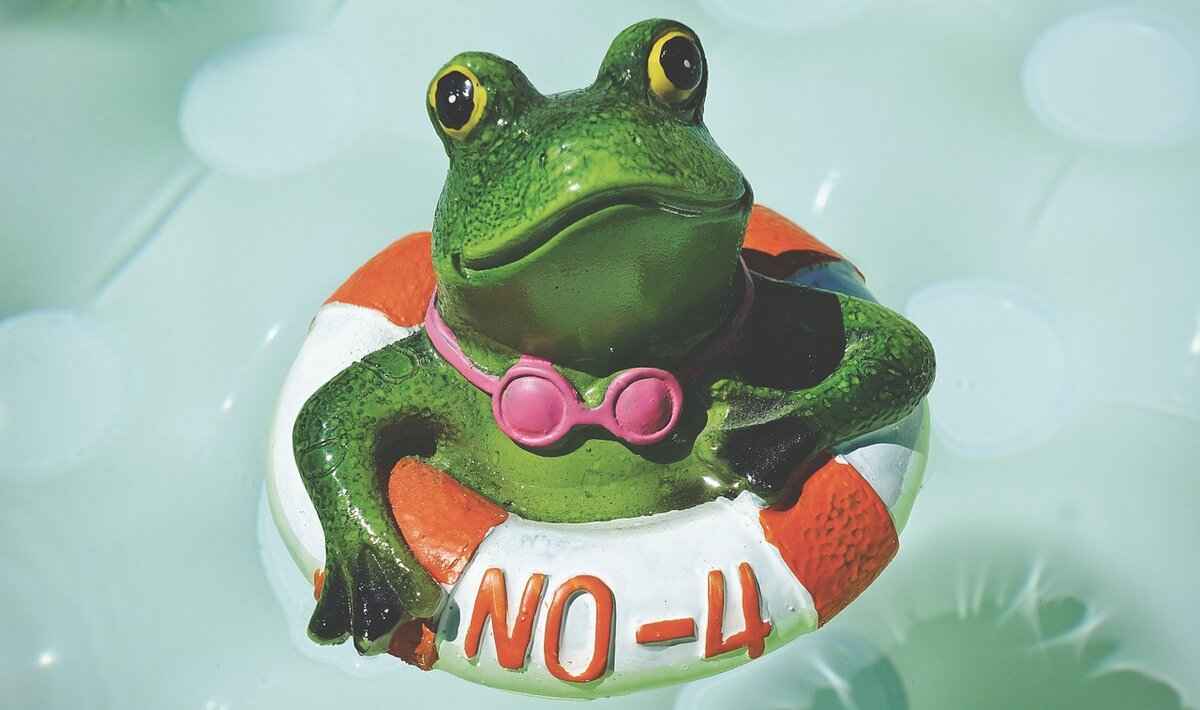
Final Tips for Determining Ring Size
Finding the perfect ring size is crucial for comfort and style. To ensure the best fit, it is important to consider various factors that can influence your finger size. Below are some essential tips to enhance your measurement experience and help you achieve an accurate size.
Finger size can change throughout the day due to several factors. It is advisable to measure your finger at different times, particularly in the morning and evening. This will help you account for natural fluctuations caused by temperature and activity levels.
Temperature plays a significant role in finger size. In warmer conditions, your fingers may swell, leading to a larger ring size. Conversely, cold temperatures can cause your fingers to shrink. To get the most accurate measurement, consider taking your measurements in a neutral environment, ideally at room temperature.
As mentioned earlier, measuring your finger at various times can yield different sizes. For example, after physical activities or during hot weather, your fingers may be larger. To achieve the best fit, aim to measure your fingers later in the day when they are likely to be at their largest.
The width of the ring can also affect the size you need. Wider bands typically require a slightly larger size compared to slimmer ones. If you are considering a wider ring, it may be beneficial to size up to ensure comfort. Always try on rings of similar width to gauge how they feel on your finger.
If you are unsure about your ring size, consider measuring multiple fingers. Different fingers may require different sizes, especially if you are looking for a ring for a specific finger, such as an engagement ring. Make sure to measure the intended finger for the best results.
If you are still uncertain about your ring size after following these tips, consulting a professional jeweler is a wise choice. They can provide precise measurements and expert advice tailored to your needs. A jeweler can also help you explore resizing options if necessary.
Lastly, take your time when measuring your ring size. Rushing can lead to mistakes and inaccurate sizes. Make sure to follow the steps carefully and double-check your measurements. Remember, a well-fitted ring not only looks beautiful but also feels comfortable.
By considering these factors and following these tips, you can ensure a successful measurement experience and find the perfect ring size that suits you.
Measuring at Different Times
When it comes to determining your ring size, one crucial aspect to consider is that your fingers can swell or shrink throughout the day. This fluctuation can be influenced by various factors such as temperature, physical activity, and even your diet. Therefore, it is advisable to measure your finger size at different times to find an average size that works best for you.
Throughout the day, your body undergoes various changes. For instance, during the morning, your fingers may be slightly smaller due to overnight fluid distribution. As the day progresses, activities such as exercise or even simply the heat can cause your fingers to swell. This is why measuring your size at different times can provide a more accurate representation of what size you truly need.
- Morning Measurements: Early in the day, your fingers are likely at their smallest. If you measure your size in the morning, you might get a size that is too small for later in the day.
- Afternoon Measurements: By the afternoon, your fingers may have expanded slightly due to increased blood flow and activity. This is often a good time to take a measurement, as it reflects a more typical size.
- Evening Measurements: After a long day, your fingers may swell even more, especially if you have been active. Measuring in the evening can help you understand the upper limit of your ring size.
To ensure that you find the most accurate ring size, consider taking measurements at these different times and averaging the results. This approach helps account for the natural variations in finger size. Additionally, it is advisable to measure your fingers in different temperatures. For example, cold weather can cause your fingers to shrink, while warm weather can lead to swelling.
When measuring, use a non-stretchable material such as a piece of string or a paper strip. Wrap it around the base of your finger and mark where it overlaps. This method provides a clear measurement that you can compare against a ring size chart. Remember to measure your finger multiple times throughout the day to ensure accuracy.
In summary, measuring your ring size at different times of the day is an essential step in ensuring a proper fit. By understanding how various factors affect your finger size, you can make a more informed decision when purchasing a ring. This attention to detail will help you avoid the common pitfalls associated with ring sizing and ensure that your new piece of jewelry fits comfortably and securely.
Considering Ring Styles
When it comes to selecting the perfect ring, understanding how different styles can impact fit is crucial. is not just about aesthetics; it also plays a significant role in comfort and wearability. This section will delve into how various ring styles can affect sizing and what to keep in mind during your selection process.
The width of a ring band can significantly influence the size you should choose. Wider bands typically require a larger size than standard bands. This is because a broader surface area makes the ring feel tighter on your finger. For example, if you usually wear a size 7 in a delicate band, you might need a size 7.5 or even 8 in a wide band. It’s essential to take this into account when shopping, as the snugness of a wider band can lead to discomfort if the size is not adjusted accordingly.
Certain ring styles come with additional features, such as intricate designs or embellishments, which can also affect fit. For instance, rings with thicker settings or those adorned with gemstones may require a larger size to accommodate the added weight and volume. If you are considering a ring with a raised setting or multiple stones, be sure to account for this when determining your size.
The shape of the ring can also influence how it fits on your finger. For example, a ring with a rounded interior will generally feel more comfortable than one with a flat interior. Additionally, some styles, such as comfort-fit rings, are designed with a rounded inside edge, enabling them to slide on and off more easily. If you prefer a specific design, be sure to try it on to understand how it feels compared to more traditional styles.
Stackable rings have become increasingly popular, and they often require a different approach when it comes to sizing. If you plan to wear multiple rings together, you may want to choose a slightly larger size to allow for the extra bulk on your finger. It’s worth trying on multiple rings to see how they feel when stacked, as this can help you determine the best size for your collection.
When in doubt, consulting with a jeweler can provide valuable insights into how different styles may fit on your finger. A professional can help you navigate sizing for various styles, ensuring that you make an informed choice. They can also assist with resizing options if you find that your initial selection doesn’t fit as expected.
Ultimately, the key to finding the right ring size lies in understanding how style influences fit. Always consider the width, shape, and design of the ring when selecting your size. By taking these factors into account, you can ensure a comfortable and flattering fit, making your ring-wearing experience enjoyable. Remember, it’s not just about the look; it’s about how the ring feels on your finger, too!
Frequently Asked Questions
- How can I measure my ring size at home?
You can easily measure your ring size at home using a piece of string or a strip of paper. Wrap it around the base of your finger, mark where it overlaps, and then measure the length against a ruler. This will give you a good indication of your size.
- What if I don’t have a ruler?
No worries! You can use any standard item with a known length, like a credit card or a dollar bill, to measure against your string or paper. Just make sure to note the length accurately!
- Is it okay to measure my ring size at different times of the day?
Absolutely! Your fingers can swell or shrink due to temperature and time of day. It’s a great idea to measure at various times to find an average size that works best for you.
- Can I use a coin to determine my ring size?
Yes, using a coin is a creative way to estimate your ring size. Just compare the diameter of a coin, like a quarter, to the inner diameter of a ring that fits well on your finger.
- What should I do if I’m still unsure about my size?
If you’re uncertain after measuring at home, it’s best to consult a professional jeweler. They have the right tools and expertise to provide you with an accurate measurement.

